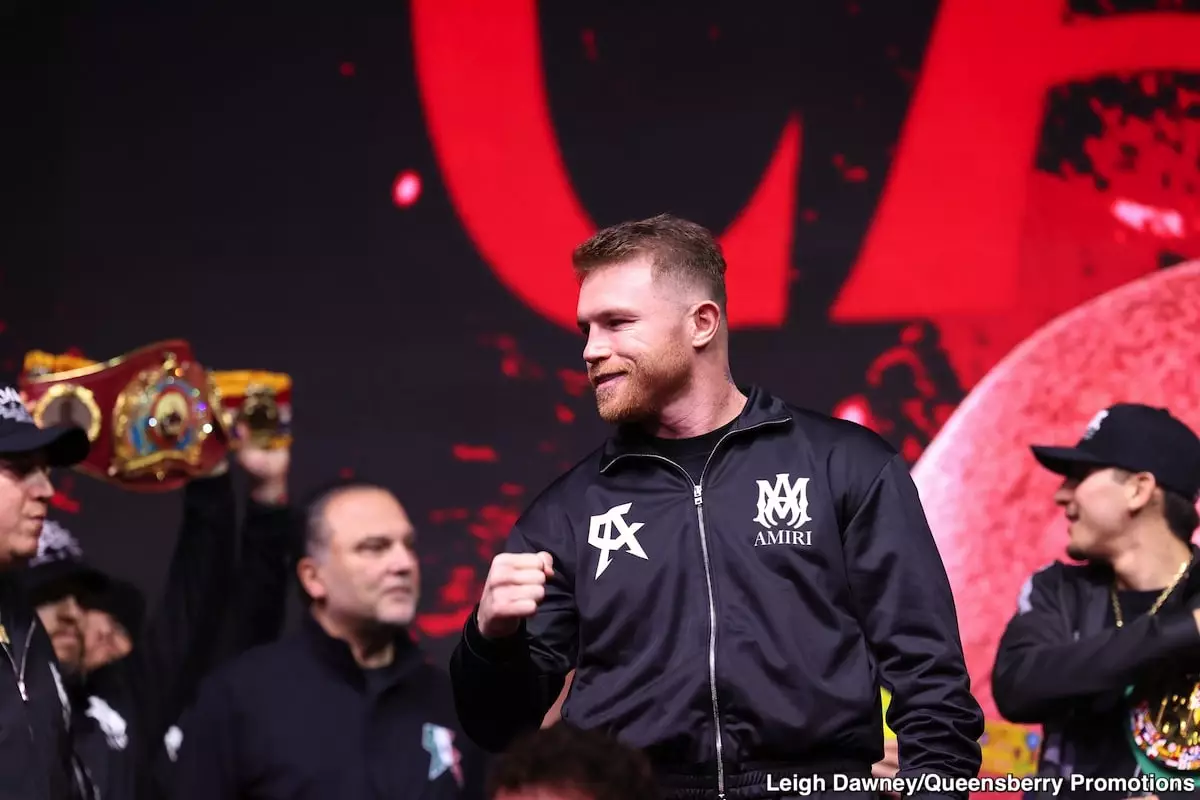The highly anticipated super middleweight championship bout between Canelo Alvarez and Terence Crawford is now set for September 13, a shift from its original scheduling on September 12. This change has sparked discussions among boxing fans and industry experts alike. According to sports analyst Mike Coppinger, promoter Turki Alalshikh plans to select the venue that offers the “best deal,” potentially shifting the fight to Las Vegas, Los Angeles, or New York City. However, as fans contemplate the implications of this decision, it’s crucial to consider how such decisions stray from traditional fan engagement in a sport where loyalty runs deep.
Choosing the Right Venue for the Fans
While Las Vegas has historically been a favored location for major boxing events, the choice of venue holds more significance than just monetary incentives. New York City, despite its glamorous reputation, poses challenges due to its geographical distance from Alvarez and Crawford’s primary fan bases. This reality reflects a growing trend in boxing—where the financial bottom line often overshadows the need for a strong connection with the audience. With the recent Times Square event attracting a notably limited crowd, are we witnessing a widening rift between promoters and local fans? The implications are profound. If the fight’s venue is prioritized purely for profit, the core audience—those who buy tickets and cheer in arenas—might find their loyalty overlooked.
The Bizarre Choice of Riyadh for Press Conferences
Even more peculiar is the decision to kick off promotional efforts with a press conference in Riyadh, Saudi Arabia. It raises eyebrows, especially as the actual fight will unfold in the U.S. This strategy seems illogical and somewhat alienating to the American fanbase. While such moves can undoubtedly help raise the profile of boxing in Saudi Arabia—an emerging player in global sports—it also signals a troubling trend: the U.S. audience may be seen merely as ticket buyers without genuine engagement in the fight’s promotion and narrative-building phases.
Why Crawford Might Not Capture the Casual Fan
The complexities of fight promotion extend beyond venue selection. Despite Crawford’s undeniable skill, his limited appeal to casual fans compared to more flamboyant fighters like Jaron Ennis or Gervonta Davis cannot be ignored. His fighting style, which resonates deeply with hardcore boxing aficionados, often lacks the entertainment value that casual viewers seek. This raises an essential question for boxing promoters: Can a fighter who excels in defense and subtle strategy engage an audience that craves excitement and brawling? The thought of pairing Crawford against a crowd-pleaser like Canelo glorifies certain aspects of boxing, but it risks alienating those who prefer dramatic displays over tactical finesse.
Saudi Arabia’s Ambitions in Boxing
As the prospects of staging high-profile fights grace global headlines, it is evident that Saudi Arabia is keen on establishing itself as a heavyweight in the boxing arena. Their strategic initiatives may indeed revolutionize fan engagement and industry investments, positioning the region as a budding capital of sports entertainment. Yet, it begs the question: Is this progress beneficial for the sport overall, or does it threaten the traditional dynamics between fighters, promoters, and loyal fans? The answer may not come easily, but the course the sport is taking demands our attention, particularly from American boxing enthusiasts who increasingly feel their loyalty is being undervalued.

